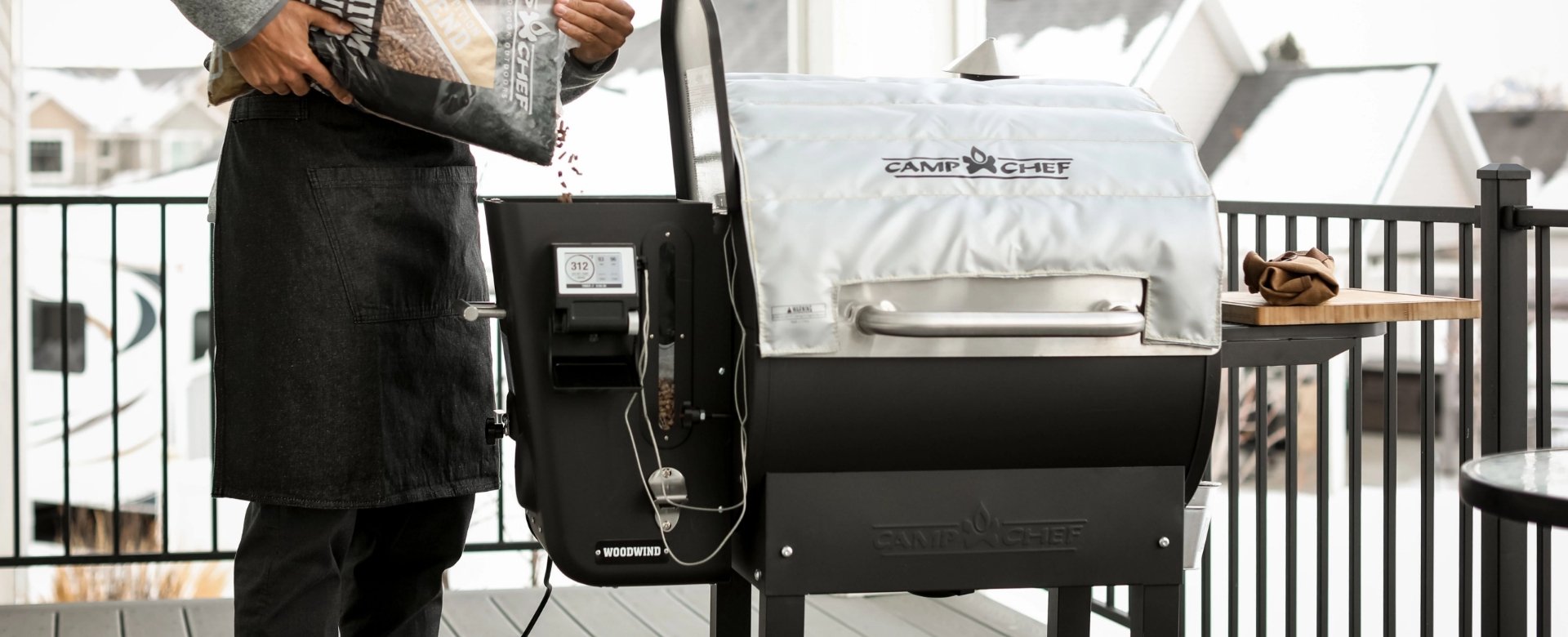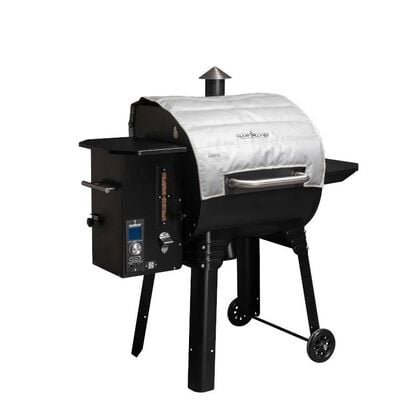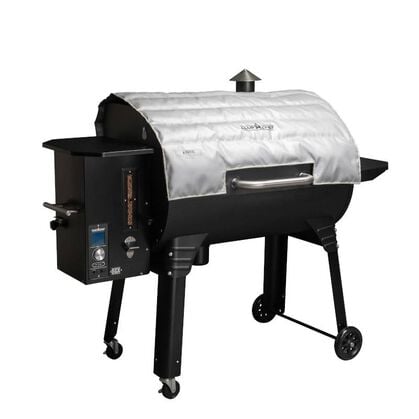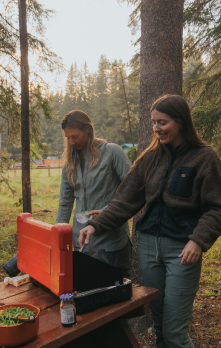1. Load Up on Pellets
When the temperature drops outside, it chills the metal body of your pellet grill. This, in turn, cools the inside of your grill. Additionally, your grill needs to suck in some oxygen to keep the burn cup going. It's pulling in cold air even as it's trying to heat things up. What does this mean for you and your winter grilling? You're going to need plenty of fuel. Make sure you stock up on pure hardwood pellets-the kind without chemical fillers or recycled wood materials. A high quality pellet, like what you'll find from Camp Chef, should contain only premium virgin hardwood because it burns the hottest and the most efficiently. In cold weather, your grill is going to use more fuel to reach the right temperature; plan on using about 50% more than you would in the summer.
2. Insulate, Insulate, Insulate
When it gets cold outside, you bundle up in layers, right? The same principle applies to your pellet grill. It needs insulation to keep the heat in and the cold out. Make sure you brush off any snow from the surface (that doesn't count as insulation). Then cover it with a 24" pellet grill blanket or a 36" pellet grill blanket-it's heat-proof and weather-resistant for cooking in the rain, sleet, snow, or wind. Not only will you burn less pellets, making it a greener, more efficient burn, but your overall cook will turn out better. You'll notice a huge difference with preheating times and temperature stability when you're grilling in the winter with a pellet grill blanket.
3. Keep the Lid Closed
While we're on the topic of insulation, there's one rule you should keep in mind for cold weather grilling: never open the lid unless you have to. Each time you crack open the pellet grill lid to take a peek at the 3-2-1 ribs you're smoking, a massive amount of heat escapes the cooking chamber. Your grill will have to work much harder and burn even more fuel to keep the heat up if you check your food every 15 minutes. Instead of opening the lid, use the stainless steel meat probe thermometer to read your meat's internal temperature. You can also use a wireless digital thermometer to keep track. In fact, you can set your wireless thermometer to alert you when the desired temperature is reached-that means you can stay warm in the house while your prime rib cooks to perfection.4. Plan Ahead
When you're grilling in cold weather, you should plan on every meal taking a bit longer to cook than it does in the summer. Your grill will take longer to preheat-15-20 minutes instead of 10-and your food will probably take longer to cook because the temperature will fall roughly 10° lower than usual. For this reason, it's easier to cook recipes that are low-and-slow in the winter. You won't be crunched for time with a slow-smoked meat, and you can count on the Smart Smoke Technology of Camp Chef to keep the temp steady while you wait. That being said, you can certainly grill up some burgers and brats if that's what you're craving. Just keep a close watch on the internal temperature, and you'll have an incredible wood-fired dinner ready to eat.5. Cast Iron is Your Ally
One of the biggest challenges with winter grilling once you get past the cooking stage is keeping food warm. You don't want to overcook your meat, but you don't want it to freeze the second you take it out of the grill if you're waiting for a few other dishes to finish. Bring on the cast iron! Cast iron is famous for holding heat. Try placing a cast iron skillet or Dutch oven with a lid (depending on what you want to keep warm) inside your pellet grill or oven for a few minutes to heat. When you remove your food from the grill, place it inside the cast iron dish and place the lid on top. You can then bring this dish inside to keep warm while you wait for the rest of your meal to come together.









